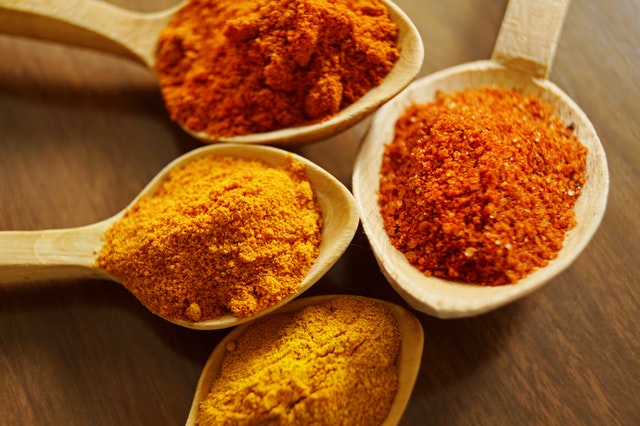
How To Increase Synovial Fluid with the Right Foods and Joint Supplements
For every movement we make with our body, we create friction between the joints used. Through our lifetime, we generate enough friction to cause enough damage to our bone structure to leave us physically unable to function.
It is however because of our body’s ability to reduce friction between our joints that we can continue on our day to day tasks.
One key component responsible for reducing joint friction is synovial fluids, a wonder of our body that helps keep our joints alive by lubricating it.
What makes synovial fluids so special is that they are able change in viscosity when force is applied on it during movement. However, like anything that has to endure friction and wear, synovial fluids in our joints will eventually reduce in quantity, resulting in issues such as arthritis.
How then do we ensure that these fluids remain active through our lifetime so we can continue to have healthy joints throughout our lives?
What is synovial fluid and what is it made of?
Synovial fluid is essentially the lubricant that reduces friction between joints in our body. It is made up of a mix of hyaluronic acid, lubricin, proteinases and collagenases.
This combination of fluid is usually found surrounding the tendons and tendon sheaths such as the knee joint.
The fluid is typically surrounded by a membrane known as the synovial membrane which keeps it in the right space for reduction of movement friction.
In its natural structure of a non-newtonian liquid held by a membrane between joints, the synovial fluid creates a tiny gap of liquid space between the bones at the joint.
This gap and space is essential for our daily lives as it stops the bones from grinding into each other which is typical of arthritis.
This also forms a protection surrounding the tendons, reducing inflammation of the joints such as found in worn out knees.
Parts of the synovial fluid such as lubricin is also very important as it reduces friction between opposing surfaces of cartilage.
It can be summed that the two functions of synovial fluids and its components are to first reduce friction and second protect the parts of the joint.
How does our body create Synovial Fluid
Synovial fluids are naturally created in our body, specifically in the locality of each joint where it resides.
Within the joints of our body you will find synovial cavities where synovial fluids reside, between the cartilages. As your body moves, the fluids are squeezed out in order to create a space between the cartilage, hence reducing the friction between joints.
It is in this very same space within the synovial joints and cavities that synovial fluids are secreted, by the synovium.
Being a key component in healthy movement, our body secretes the synovial fluids using proteins derived from blood plasmas. These blood plasmas are usually taken from cells within the joint tissue itself, making each joint a self-contained production for their own synovial fluids.
What causes Synovial fluid deficiency
The most common cause of synovial fluid deficiency is inflammation in the joint area caused usually by overuse of specific joint areas such as knees in running, It can also be caused by repetitive high-stress movements caused by lifting heavy weights.

These conditions result in the inflammation of the joint area, specifically in the synovium due to an abnormal immune response.
This abnormal immune response in joints will eventually lead to cartilage loss, resulting in the damage of joint surfaces.
Once joint surfaces have been damaged, a person will experience stiffness that is specific to the joint that is overused or put under severe stress. The same stiffness will also cause movement restriction at the affected joint. This varies in degrees depending on the damage.
Aside from stiffness, arthritis patients commonly experience pain in various degrees. In some cases, pain is localised during specific movement whereas some experience pain that is constant until movement ceases.
What foods increase synovial fluid
One way you can improve the production of synovial fluid in your joints is simply by eating specific food types that will boost its production.
The most accessible of these food types are leafy greens such as spinach and broccoli. Leafy greens being high in antioxidants will assist your body in strengthening the cartilage that synovial fluids are protecting, helping them to withstand daily wear better.
Pairing these greens with a serving of fish two to three servings per week will introduce another key player in joint health - Omega-3. These fatty acids are anti-inflammatory agents that promote better joint health through the reduction of inflammation in joints.

Fish such as salmon or sardines will do the trick just fine. If fish is not to your taste, you can consider avocados or walnuts as they contain both antioxidant mono-unsaturated oils and essential fatty acids that work as anti-inflammatory agents as well.
Additionally, there are seasonings, herbs and even oils we consume daily that are great for aiding the function of synovial fluids and joint health.
Turmeric, commonly found in indian food, contains curcumin which is an anti-inflammatory agent. Supplementing your usual cooking oil with extra virgin olive oil is another easy fix as it has been shown to block inflammation.

For antioxidants, you can consider red onion and garlic which are consumed daily by most.
Finally, for those tea lovers out there, green tea is a great alternative that is proven to provide great sources for antioxidants.
Does Exercise increase synovial fluid
It is a common misconception that exercise is the reason for decrease in synovial fluid.
In fact, exercise is one of the prescriptions given by experts to better allow your joints to generate synovial fluid.
Studies have shown that joint pain is reduced after a session of exercise as physical activity encourages the circulation of synovial fluid through the synovial joints and lubricates the joint areas.
Exercise also effectively removes water molecules that put weight on joints and ushers in oxygen and nutrients to the joints, even removing blockages.
One additional benefit of physical exercise is the removal of wastes from the added boost in blood circulation through the joints. Through this process, damaged cells and harmful wastes are flushed away from the joints through the body’s natural waste-removal capabilities, reducing pain and joint stiffness.
It is however recommended that these exercises are minimal in impact such as those experienced in running & sprinting. Jogging, walking, swimming, usage of lighter weights for strengthening are all great forms of exercises that will boost joint health
What supplements can I take to lubricate my joints?
Outside of the above mentioned food sources where natural building blocks for synovial fluid can be found, you can choose to take supplements to further improve your joint health.
The most common of these supplements are glucosamine and chondroitin. These supplements are widely used and commonly referred to when joint health is the concern. They are easily found in most if not all pharmacies and usually come with additional supplementary elements included.
Glucosamine is useful for supporting the recovery of connective tissues such as cartilage, providing it with the nutrient blocks needed to rebuild and strengthen cartilage.
Chondroitin on the other hand is also easily accessible and helps with strength and stability of cartilage in joints.
Primary components for these two pharmaceutical products are typically shellfish shells for glucosamine and as for chondroitin, they are typically made from bone or shark cartilage.
Depending on your health requirements and perhaps joint conditions, dosage may vary, these products however typically come in either 500mg or 1000mg tablet forms.

To break it down for you and for ease of research, you may try BioScience® Glucosamine, Chondroitin & MSM 240s. It has both glucosamine and chondroitin in it and boosts joint comfort, as the name suggests.
Before taking any supplements, it is advisable to consult with your doctor.
Conclusion
Synovial Fluid is essential in order to reduce friction between our joints. There are many ways to increase synovial fluid such as via our diet, through movement and with supplements.
Synovial Fluid (Online) Available at: https://www.sciencedirect.com/topics/medicine-and-dentistry/synovial-fluid [Accessed 15 August 2020]
Synovial Fluid and Synovial Fluid Analysis (Online) Available at: https://www.webmd.com/arthritis/synovial-joint-fluid-analysis [Accessed 15 August 2020]
The Synovial Joint and Synovial Fluid (Online) Available at: https://ostenil.trbchemedica.co.uk/patient-information/synovial-joint [Accessed 15 August 2020]
Synovial Fluid Composition and Functions (Online) Available at: https://boneandspine.com/synovial-fluid/ [Accessed 15 August 2020]
Improve Your Joint Health with These 12 Superfoods (Online) Available at: https://www.fishertitus.org/health/superfoods-for-healthy-joints [Accessed 15 August 2020]
5 Ways That Exercise Can Help Reduce Joint Pain (Online) Available at: https://www.jointflex.com/ways-exercise-can-help-reduce-joint-pain/ [Accessed 15 August 2020]
Help for Arthritic Knees (Online) Available at: https://www.sutterhealth.org/services/orthopedic/non-surgical-treatment-knee-osteoarthritis [Accessed 15 August 2020]
Knee Osteoarthritis (Online) Available at: http://www.internalmedhouston.com/knee-osteoarthritis.html [Accessed 15 August 2020]
Synovitis (Online) Available at: https://www.hss.edu/condition-list_synovitis.asp [Accessed 15 August 2020]


Leave a comment